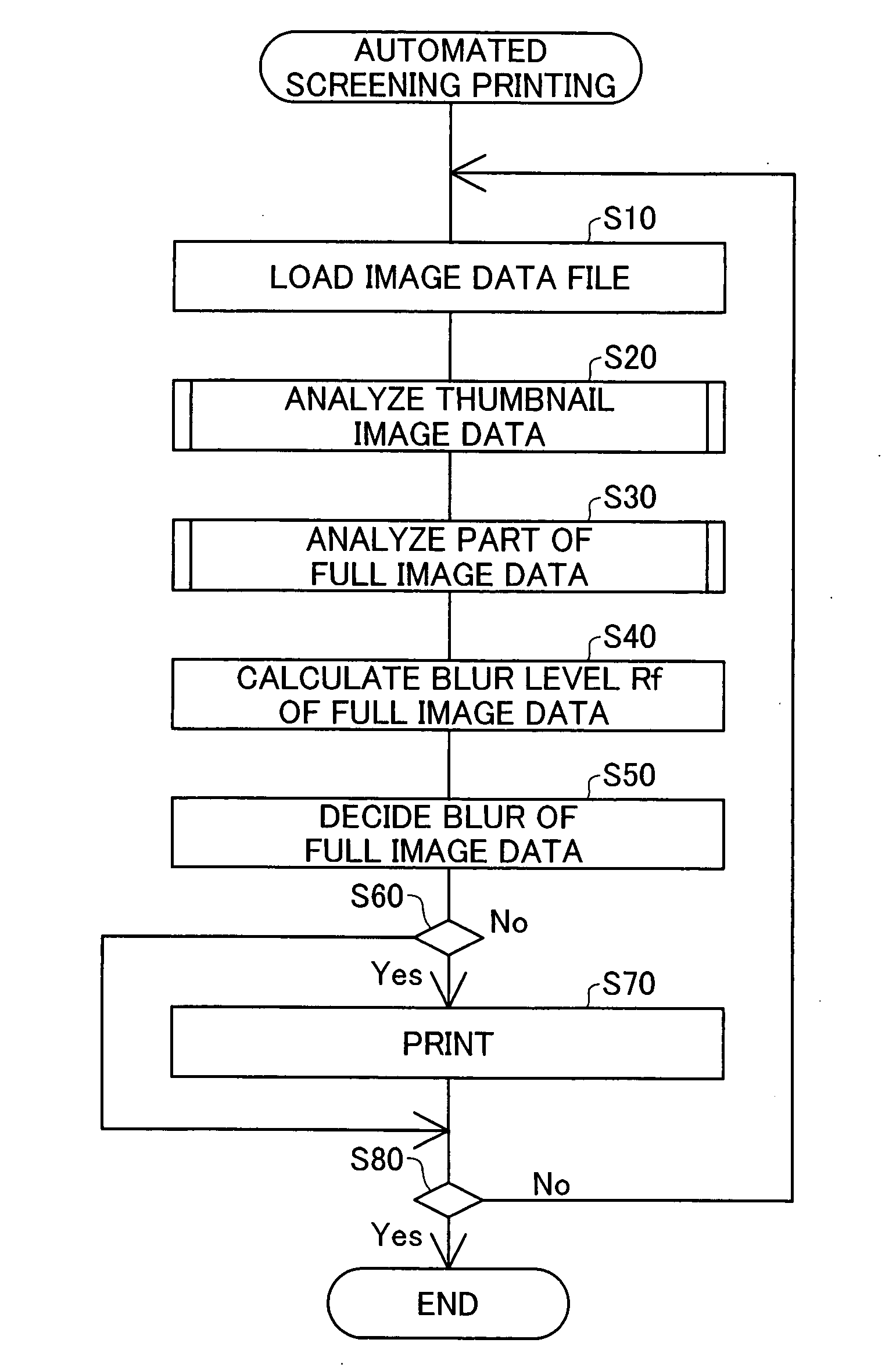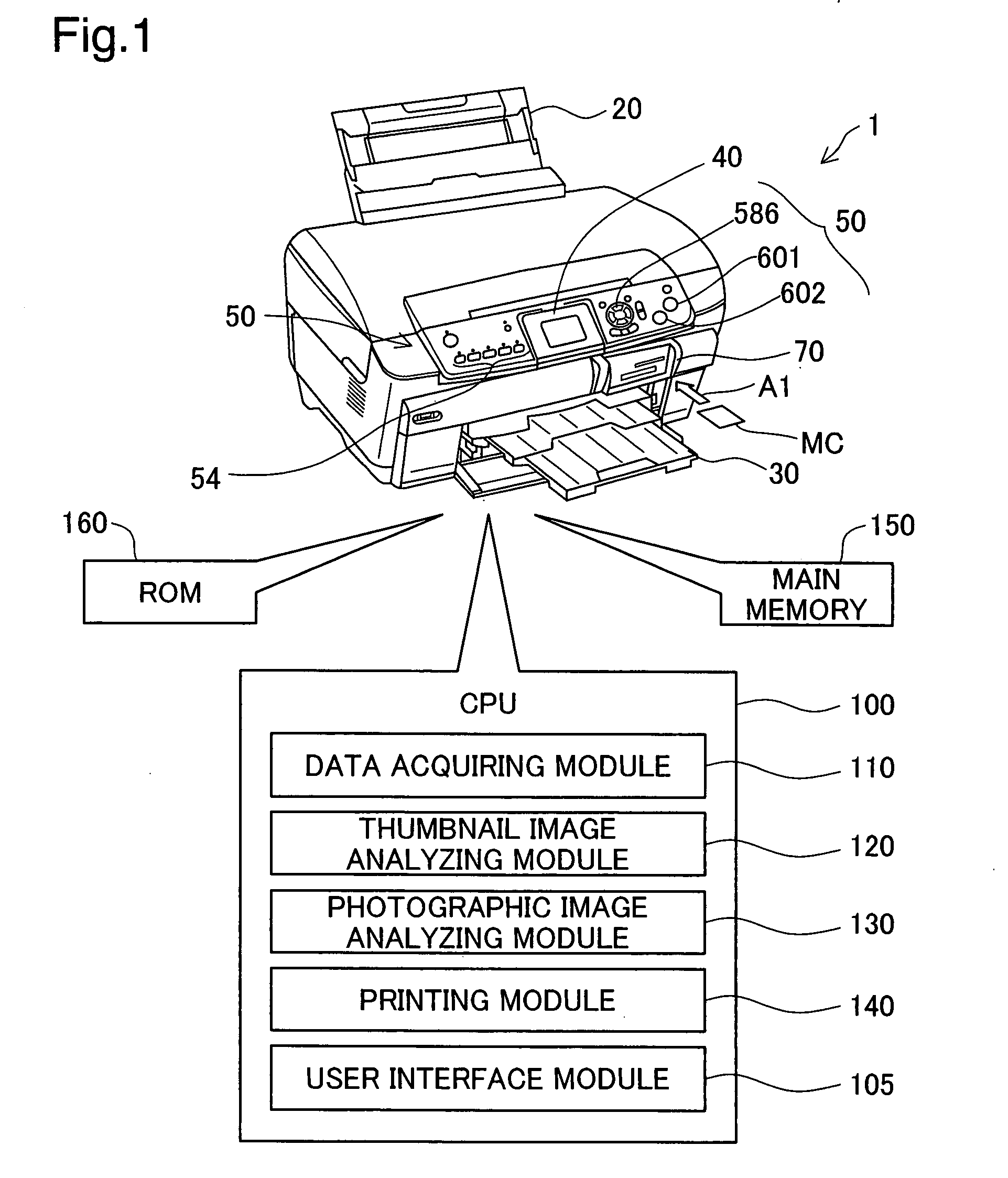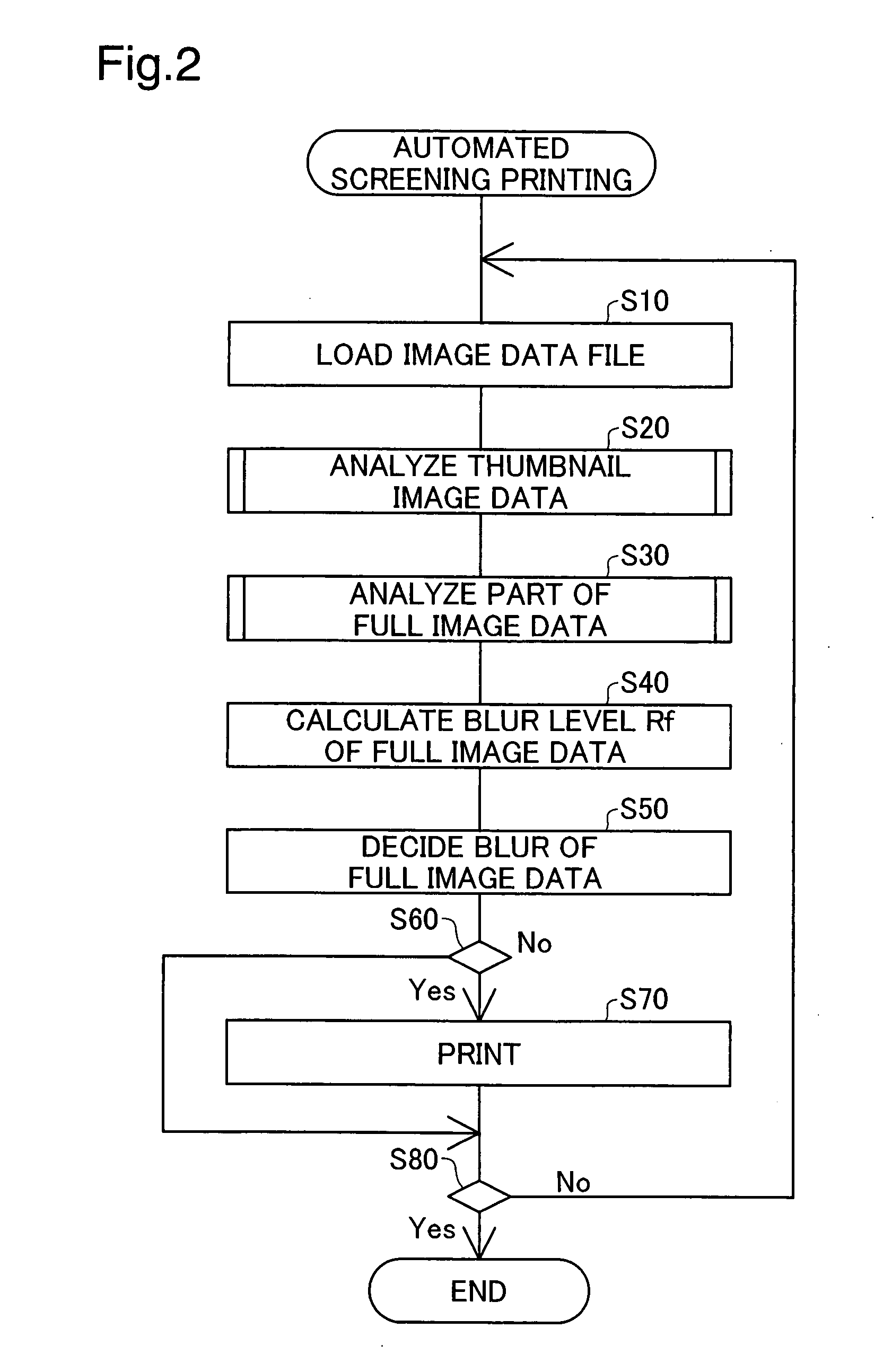Determining if an image is blurred
a technology of blurred images and blurry images, applied in image analysis, visual presentation, image enhancement, etc., can solve the problems of enormous volume of processing, and achieve the effect of efficient determination of blurry images
- Summary
- Abstract
- Description
- Claims
- Application Information
AI Technical Summary
Benefits of technology
Problems solved by technology
Method used
Image
Examples
embodiment 1
A. Embodiment 1
[0045]FIG. 1 is a perspective view of the present invention in the embodiment of a printer 1. The printer 1 is able to carry out printing independently on the basis of an image data file stored on a recording medium, without the printer being connected to an external computer. This printer 1 includes a print head (not shown) that prints by ejecting ink drops; an auto sheet feed 20 for feeding the printing paper; a paper discharge tray 30 for receiving printing paper on which images have been imprinted; a liquid crystal display 40; a button group 50 for performing various operations; a card slot 70 for reading data from an inserted memory card; a CPU 100; a main memory 150; and a ROM 160. In FIG. 1, the CPU 100, the main memory 150, the ROM 160 are depicted to the outside of the printer as a aid to description.
[0046]A memory card MC such as a Compact Flash™ card, SD card, miniSD card, memory stick, smart media card, or the like can be inserted into the card slot 70 dir...
embodiment 2
B. Embodiment 2
[0092]In Embodiment 1, there is a one-to-one correspondence between one pixel of a thumbnail image, and a block region of the full image (see FIGS. 4 and 5). Edge width We is calculated on the basis of luminance at pixel positions in a target region Apt and a neighboring region Apn (see FIG. 8). In Embodiment 2, the size of block regions of the full image is constant and not dependent on the size of the full image or the thumbnail image. For this reason correspondence between one pixel of a thumbnail image and a block region of the full image is not limited to one-to-one correspondence. Also, edge width We is determined on the basis of a DCT coefficient of block regions. In other respects, Embodiment 2 is the same as Embodiment 1.
[0093]FIG. 9 is a diagram depicting DCT coefficients for an image of a target region in which image data is stored in JPEG format. The JPEG format image data stores coefficients (DCT coefficients) F00-F77 representing frequency components of ...
modified example 1
C1. Modified Example 1
[0114]In Embodiment 1, luminance of each pixel is employed as the criterion for edge pixel (specific pixel) selection. However, during specific pixel selection, the specific pixel can be selected on the basis of some other pixel tone value. For example, the specific pixel can be selected on the basis of a tone value representing intensity of red, green, or blue, instead of luminance.
PUM
 Login to View More
Login to View More Abstract
Description
Claims
Application Information
 Login to View More
Login to View More - R&D
- Intellectual Property
- Life Sciences
- Materials
- Tech Scout
- Unparalleled Data Quality
- Higher Quality Content
- 60% Fewer Hallucinations
Browse by: Latest US Patents, China's latest patents, Technical Efficacy Thesaurus, Application Domain, Technology Topic, Popular Technical Reports.
© 2025 PatSnap. All rights reserved.Legal|Privacy policy|Modern Slavery Act Transparency Statement|Sitemap|About US| Contact US: help@patsnap.com



